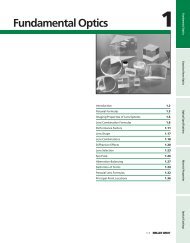Intel PXA250 and PXA210 Applications Processors
Intel PXA250 and PXA210 Applications Processors
Intel PXA250 and PXA210 Applications Processors
Create successful ePaper yourself
Turn your PDF publications into a flip-book with our unique Google optimized e-Paper software.
System Memory Interface<br />
Table 2-9. Card Interface (PCMCIA or Compact Flash) AC Specifications (Sheet 2 of 2)<br />
Symbol<br />
Description<br />
MEMCKLK<br />
99.5 118.0 132.7 147.5 165.9<br />
Units<br />
Notes<br />
tcardDH<br />
tcardCMD<br />
MD(31:0) hold after nPWE, nPOE,<br />
nPIOW, or NPIOR de-asserted<br />
nPWE, nPOE, nPIOW, or nPIOR<br />
comm<strong>and</strong> assertion<br />
10 8.5 7.5 6.8 6 ns, 1<br />
30 25.5 22.5 20.4 18 ns, 1<br />
NOTE:<br />
1. These numbers are minmums. They can be much larger based on the programmable Card Interface<br />
timing registers.<br />
2.6.6 DMA / Companion Chip Interface<br />
Connect a companion chip to the applications processor via:<br />
• Alternate Bus Master Mode<br />
• Variable Latency I/O<br />
• Flow through DMA<br />
These connections are illustrated in Figure 2-6 <strong>and</strong> Figure 2-7.<br />
2-14 <strong>PXA250</strong> <strong>and</strong> <strong>PXA210</strong> <strong>Applications</strong> <strong>Processors</strong> Design Guide
















